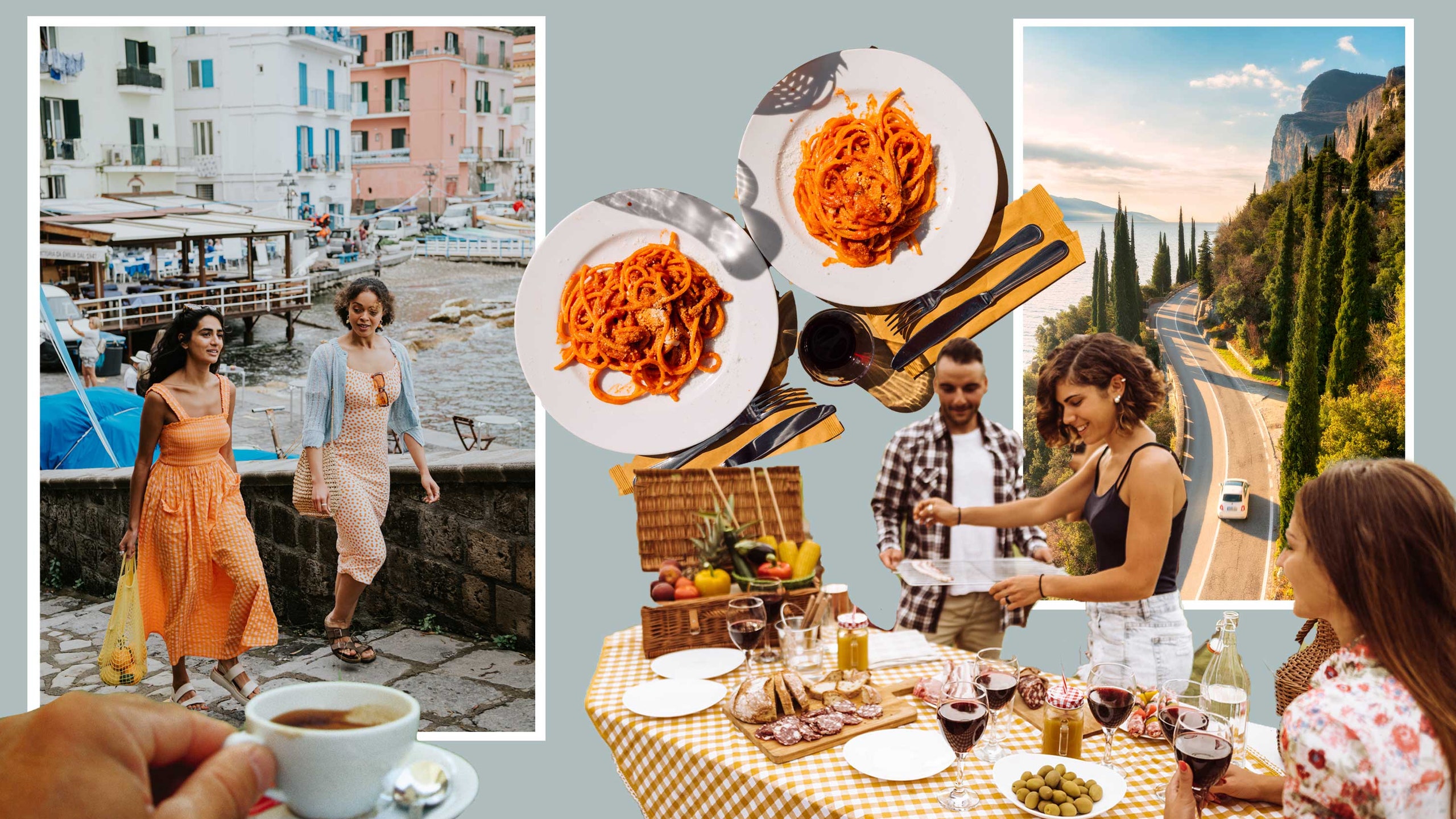Ask an Italian what a typical tourist looks like in Italy, and they'll likely conjure up an image of someone traipsing around in shorts, flip-flops and a bucket hat, perhaps flocking behind a tour guide waving a flag. Fortunately, over the past few years, tourists have become more conscious travellers, looking to blend in and adhere to local customs where possible. In Italy, there are several unwritten rules that we take quite seriously. Below, we let you in on the five top things you need to know to avoid sticking out like a sore thumb on your next trip to Italy.
1. Remember coffee etiquette
Let’s begin with the most important principle in Italy: coffee. Coffee is to Italy what tea is to the UK: that moment of simple pleasure as you take the first sip in the morning, an excuse to catch up with a friend over a quick espresso, or the ultimate end to your meal (especially when poured over a ball of gelato). The fragrance of freshly brewed coffee is what we grew up with; our parents would turn on the moka each morning, and the scent would travel around the house. Coffee has evolved, from cappuccino to macchiato, caffè latte and, of course, our beloved espresso. Many Italians drink a cappuccino in the morning, dipping their croissant (or cornetto, as we call it – translating to “little horn” because of its shape) until it loses its crunch and soaks in the milky flavour. But one rule to remember is that once you've eaten lunch, a cappuccino is a no-go.
2. Learn which pasta dishes take cheese
This next rule is about our beloved cheese. Depending on which region you visit, different types of cheese are typically paired with a certain type of pasta. For example, in Puglia, cacio ricotta cheese is usually grated on most orecchiette recipes, while in Rome, pecorino is used in amatriciana, carbonara and cacio e pepe. Parmigiano Reggiano and Grana Padano are used more widely, but always remember the one golden rule: parmesan does not go on fish. If you love spaghetti alle vongole, or any seafood pasta for that matter, you should note that parmesan will not be served – and if you ask the waiter to bring you some, you’ll most certainly get a raised eyebrow in return. This is because the saltiness of parmesan would cover the delicate flavours of the fish. In fact, when you travel to Sicily, they use grated bread instead of cheese on their traditional seafood pasta dishes, such as busiate alla trapanese or pasta con le sarde.
3. Respect dress codes
Let’s talk outfits. We’re not here to tell you how to dress, but if you want to avoid disapproving looks, here are some pointers you should follow. If you’re travelling to a coastal town, it’s okay to rock up for lunch and aperitif wearing your swimsuit and a shirt or a sarong, however, for dinner, you should dress smartly. This can mean smart shorts, long trousers with a long-sleeved shirt, or a midi or maxi dress – and certainly no trainers, sliders or flip flops (and most definitely no sliders with socks). On a side note, remember that dinner in the summer season officially starts at 8.30pm at the earliest; most Italians tend to book from 9pm or even 10pm because this allows time to shower and change after aperitif.
4. Learn how to greet like a local
This rule is golden if you wish to integrate with the locals. When you’re meeting someone for the first time, Italians tend to shake hands and say "piacere", meaning "it’s nice to meet you". From the second time onwards, it’s two kisses (one on each cheek). In Italy, you begin with your left cheek, whereas in other European countries, it’s the right – this is important to remember if you want to avoid kissing on the mouth. This should go without saying, but if you’re invited for dinner or aperitif at someone’s home, don’t show up empty-handed. Always bring a bottle of wine, box of chocolates or flowers, no matter the occasion. In addition, if you show up on time, just know you’ll be causing panic. Being fashionably late (around fifteen minutes) is the best port of call.
5. Be aware of cars
Road rules are a little blurry in Italy. Most of the time, there are no priorities over junctions, crossroads or roundabouts – it tends to be everyone for themselves. When you’re crossing the road at a zebra crossing, and there isn’t a traffic light, make sure it’s safe to cross because cars will rarely slow down (let alone stop). If a car does stop, still be on the lookout for mopeds that might not see you from behind the vehicle. When you rent a car, especially if you’re not used to driving on the right-hand side, know that the further south you go, the more road rules are disregarded.
